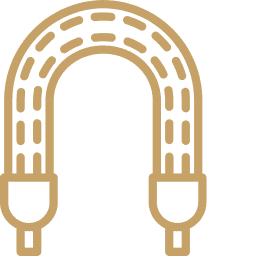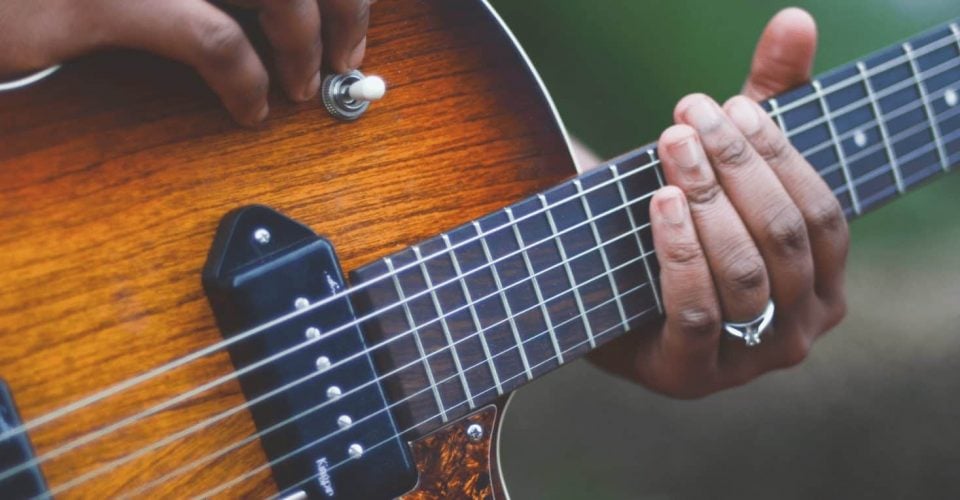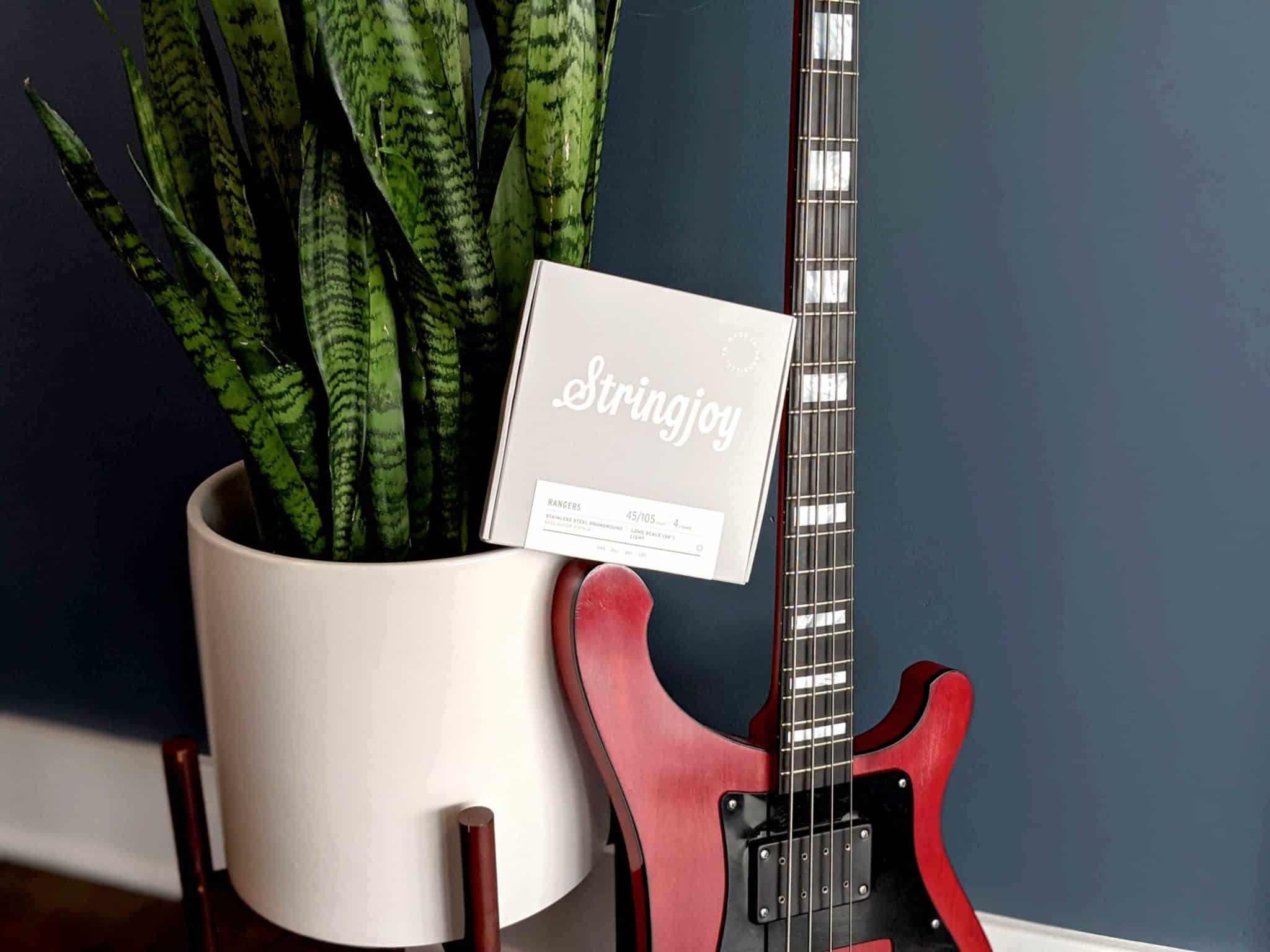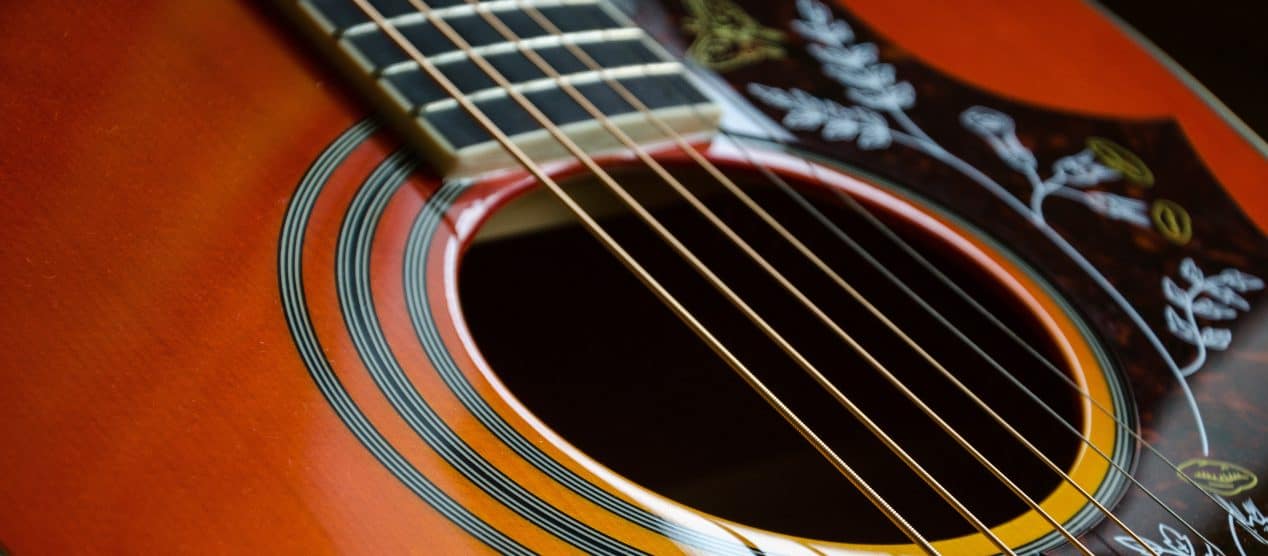When it comes to guitar strings, there are a few rules: The first and second strings are always plain and the fourth through sixth (or seventh, or eighth) are always wound. The third string (or G string), however, tends to be a bit of a gray area where you can either have a wound G string or a plain G string, depending on each player’s preference. Both wound vs plain G strings have their advantages and disadvantages, but years back players didn’t even have the option to choose…
History of the Wound G String

Back in the 50s when Ernie Ball was teaching at his shop in Tarzana, California, he noticed a lot of his students were having trouble learning the popular rock ’n’ roll songs of the time because of the strings available. The most popular electric set back then was the Fender #100 medium gauge that had a stiff wound 3rd (kind of like a modern acoustic strings set). This was difficult for a lot of players when it came to bending strings, especially those just starting out.
He tried to find a solution, so he went to Fender and asked them to make him a smaller set, particularly one with a plain third, but was turned away. He got in touch with a string manufacturer and made some smaller, lighter gauge sets that fit his needs. Ball’s music store began to receive a lot of attention after he started selling these strings and set him on the path to creating the Ernie Ball brand.
Before he did this though, the only other way to get a plain third was to make a set yourself. Players would ditch the low E string of a traditional set and add a banjo string in place of the high E. So the A string became the low E, the D string became the A string, and so on and so forth. This way players could piece together a set that had smaller gauges overall and most importantly, a plain third. So that, in a nutshell, is how plain third strings became popular.
But enough about that Ernie Ball guy…
Modern Usage of Wound 3rd Strings
The wound 3rd vs plain 3rd topic is still a hotly-debated issue in the modern guitar world and you’ll find plenty of players that prefer one over the other.
The main advantage of plain thirds is that they make bending strings easier (as we discussed earlier). They also produce less finger noise than wound 3rds. So if you’re a fan of super light tension and extreme bends, I would recommend sticking with a plain 3rd string.
If you tend to favor 10 Gauge (Regular Light gauge) strings or higher, and you’re not doing a ton of extreme string bending, however, you might want to string up a wound 3rd on your guitar for a few reasons.
Generally speaking, with a wound G string you’ll get better intonation on your guitar, and better tuning stability. Many guitarists think that a wound G string just sounds better, and balanced better tonally in a set with its fuller, warmer sound. They’ve remained popular among jazz and rhythm players for this exact reason.
Is a Wound G String Right For You?
At Stringjoy, we’re all about helping you find the perfect set of strings for your acoustic guitar or electric guitar, and the best advice we can give is to keep an open mind when it comes to trying new strings. So if you’ve been playing a plain third for a while, we recommend giving a wound 3rd a try, and vice versa—as always, experimentation is the key to finding what’s right for you.
We also make it crazy easy to try out a wound G string. How’s that you ask? Well, while most string manufacturers only make a few sets with a wound G string—almost all of which are super heavy gauge—at Stringjoy you can opt for a wound G string on any of our string sets. Simply build a Custom set of Strings—at no additional charge—and select a wound 3rd string instead of a plain steel string (you’ll know the difference because on gauges where we make both wound and plain versions we put a “w” after the gauge to signify a wound string, and a “p” after the gauge to signify a plain string).
The best part about this is that you can keep with the gauges you’re used to, and simply add in a wound G string that will keep the same tension as the other strings in the gauge set. To do this, simply select a wound string that’s just a hair heavier in gauge than the plain string it’s replacing, to account for the reduced tension wound strings exert versus their plain counterparts. So if you’re replacing a plain .017 in a set, go for a .018w to keep the same tension, and if you’re replacing a plain .018 or .019, go with a .020w.
Alternatively, if you want to start with some tried and true favorites, opt for our Wound 3rd Light (10-48) Gauge or our Wound 3rd Medium (11-50) Gauge sets.








22 Responses
A flexible wound g would have to be made w/ a special formula. We have more advanced technology so the evolution of guitar strings should be extended.
Why not just cut the Guitar’s Scale Length down from 25.5 inches to 19 inches?
A Guitar string set w/ all wound strings in E2-E4 tuning would certainly produce the sound of the future but w/ those super thin wound strings, we’d have to “reinforce” them. Magma Strings from Argentina told me that they’ll make Guitar string sets w/ all wound strings because they use “microwound” technology.
Thomastik Infeld makes Guitar String sets w/ a Wound 3rd in that the Wound G is also a Flexible Wound G because the Wound Strings are compound wound. They’re designed essentially like Strings for Bowed stringed instruments.
No, they don’t. Compound winding a G would lead to an incredibly weak string, which is already the big weakness of wound 3rd strings. If you want to point us towards the set you’re thinking of we can take a look at what they’re actually doing, because it isn’t that.
We’d need to really improve the technology to make super thin & strong wound strings like “microwound” technology. With thinner core wire diameters, we’d have to “reinforce” it to make it stronger.
Thomastik Infeld said that their Wound G Strings are Compound Wound & never break (unfortunately I could only find that info in German). I actually have a Dragão D53 String set w/ a .016w for the G String. I never had issues w/ that string breaking because it has a Specially formulated “Flex-Hex Core”. They actually made it stronger by “reinforcing” the core & wrap wire.
JS110 Strings OK point me towards it because they’re actually compound wound when I’ve unwound a portion of a string I clipped off after putting the strings on my Guitars. Dean Markley Strings are compound wound. I feel like the technology for making strings has improved so we could make strings that were previously impossible such as wound strings thinner than .018w like .017w, .016w, etc. wound strings that are the same gauges as plain steel strings like .015w, .014w, etc. because of their “microwound” design. From reading Mandolin Cafe & using my guitar string calculator they told me that Strings w/ more tension are more prone to breakage & strings w/ less tension would be less prone to breakage:https://wahiduddin.net/calc/calc_guitar_tension_from_size.htm However if the core percentage is too large, then playability is sacrificed. If the core percentage is too small, the string can break (or be too floppy), and obviously that isn’t what we want!
All bass strings heavier than .060 (and sometimes .060s too) are generally compound wound, as are nearly all flatwound and tapewound strings. Roundwound electric guitar strings are generally not compound wound unless they’re heavier than ~.060 as it’s very difficult to compound wind very thin wires to make a thin gauge string. Dean Markley also hasn’t made strings for many years — we purchased a large portion of their equipment and it would be very difficult for me to imagine making such a thin wound string on the equipment they had as it was very, very sloppy when compared to what we used today.
I think for making super thin wound strings thinner than .018w like .017w. .016w, etc (all the way down to like a super thin .001w for a super high E5 string etc) we need better equipment & newer materials (although Octave4Plus makes strings like this, they use really specialized technology & they’re treated as if they were gut strings). Maybe Magma Strings could make something like that because their Equipment is more advanced. I even have a set of Magma GCT-Cello 5ths Tuned Nylon Strings which have a Strong High B4 string & that note was achieved w/ a Special Material.
Actually Dean Markley Strings are now being made by Apex.
Why not use Rocket Wire? It’s been used for a Treble Violin E6 String so let’s try that w/ super thin wound guitar strings thinner than .018w, like .017w, .016w, etc.
I’m down tuning to open C, current string gauge 12 – 62 (the G is a 24 plain and I don’t like it) – should I still go up further for the wound G? What gauge would you recommend?
try a set of 13 with the wound g string(3 string). when I went from 11 to 13s , I felt like a new door musically had been opened(weather if that was real or not is yet to be seen I’m still 🤔 evaluating the situation). hope this helps.
Change the 24p to a 25w.
I have a 1960 reissue of a Gibson Les Paul. It came with super light weight strings. (Too slinky for a beefy guitar neck): What gauge string was initially used on the 1960 Gibson Les Paul.
Hi Peter, great question! Specs are very hard to come by from that era, however they were almost certainly either .012s (which would have been considered light at the time) or .013s. Roundwound with a wound 3rd, and either Pure Nickel or Monel.
What if we could have a Flexible Wound G String by actually cutting the scale length down from 25.5 inches to like only 22 inches?
In order to intonate a plain 3rd, use the 5th fret to almost perfect C. This way all chords from 1st to 9th fret sound sweet. As most people noodle with single notes at the 12th, the slightly flattened 3rd at this point is not noticed. Let’s face it, the design of the plain 3rd e.g. 17 was tuned up to B when part of a 13 to 56 gauge. So it’s floppy down at G.
I am a loyal StringJoy customer! I switched to them for three specific reasons. Number 1 I can’t stand strings that have colored bobbins! I’m a guitar player, not a second grader who needs help distinguishing my strings with primary color codes! It looks horrible on a guitar with a Bigsby tail piece. 2: StringJoy was the only company I could find that still offered a wrapped 3rd (g). That one was super important to me. 3: after buying my first set and seeing the quality of each string blew me away! No other company spends the time to wrap the bobbin so tightly and twists the wire so beautiful.
As long as StringJoy is in business, they will have me as a life long customer. I’m sure they have a few newer customers too. I tell/show every guitar player I know about them.
Keep up the outstanding work guys! Your work is well appreciated here in Indiana!
P.S. I’d still love to have a set of Broadways with a wrapped 3rd.
You need a wound 3rd if you’ve screwed the bridge saddle for the G string back as far as you can, you’re “in tune” according to your tuner, and the intonation is good w/ the other 5 strings, but you still sound like crap when you play a D chord.
Thank you for this comment. The first very instructive discussion on this G-string issue.
Thank you again.